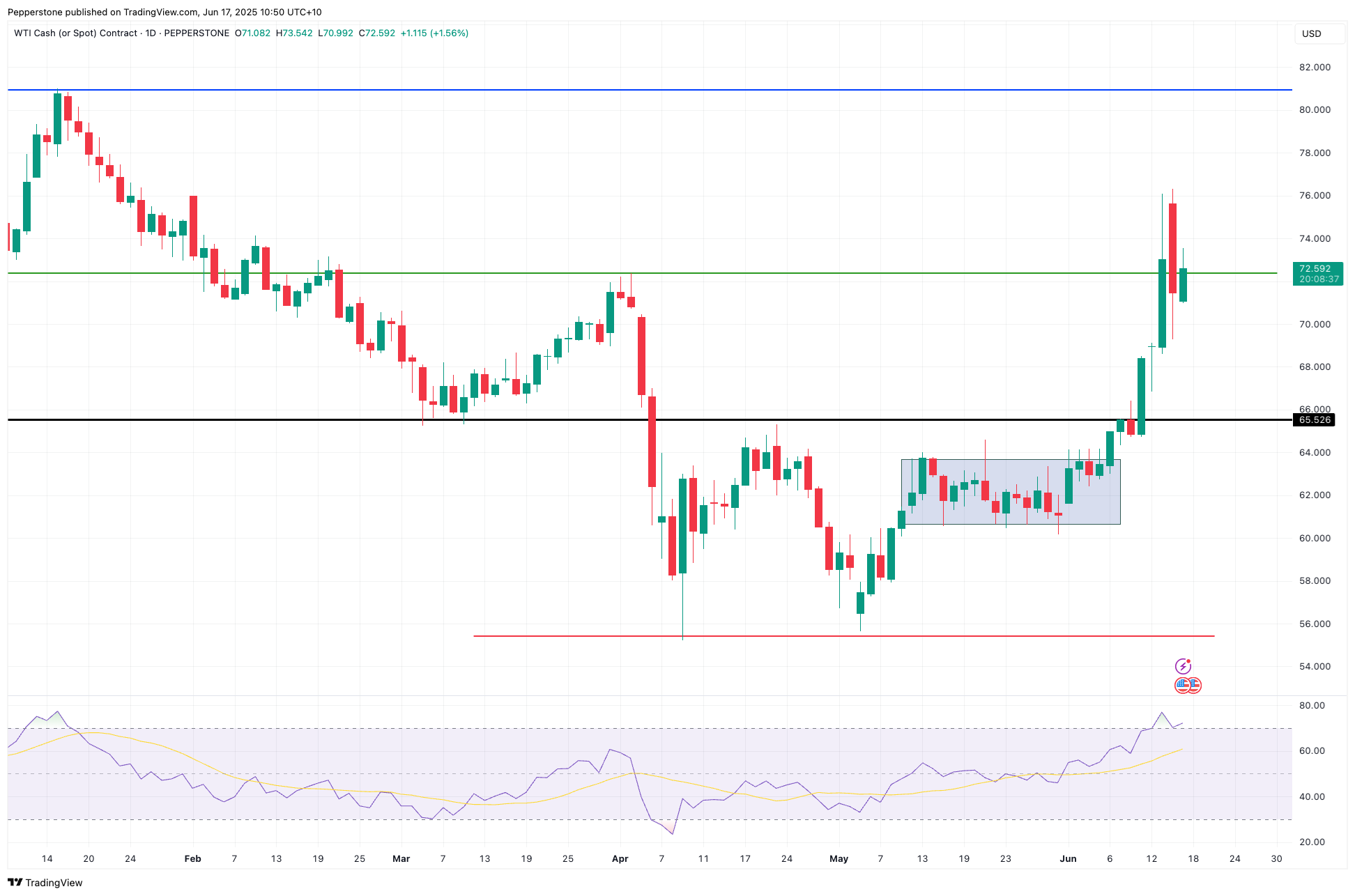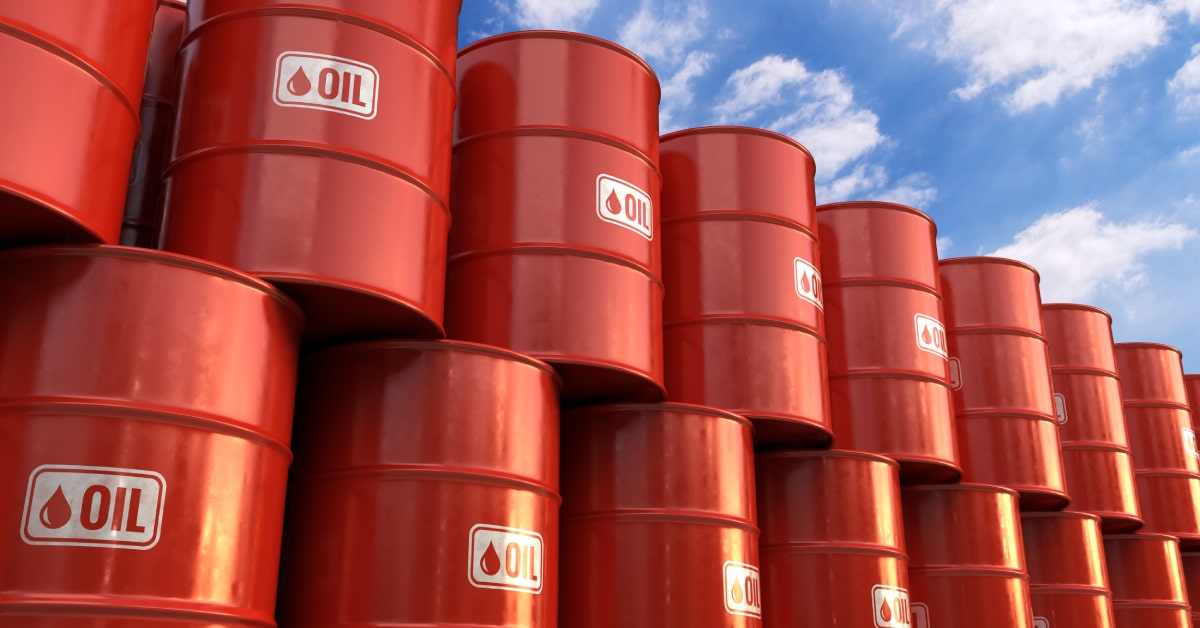- English
- عربي
Middle East Tensions Escalate: How Is China Managing Crude Oil Volatility?
.jpg)
Last Friday, geopolitical tensions in the Middle East sharply intensified as the sixth round of U.S.-Iran negotiations abruptly collapsed, triggering significant market volatility. Safe-haven buying surged, and fears of supply disruptions pushed WTI crude spot prices up to $76 per barrel—marking the highest level since January 2025.

Markets have begun to reassess the potential damage a military conflict might inflict on Middle Eastern oil production and transport infrastructure, as well as the implications should the U.S. become directly involved.
While the supply-side shocks are centered in the Middle East, the true arbiter of future crude pricing power may not be the oil producers, but the world’s largest buyer: China. For the world’s biggest crude importer, the recent geopolitical turmoil is both a short-term amplifier of imported inflation and a stress test for medium- to long-term energy security and strategic reserves.
Strait of Hormuz Blockade Remains a Tail Risk
To date, the conflict has not directly impacted critical energy infrastructure, but the security of oil shipments through the Strait of Hormuz remains the energy market’s most feared “black swan.” This narrow channel accounts for nearly one-fifth of global oil shipments, with daily volumes exceeding 21 million barrels. A closure or disruption here would spike transportation and insurance costs, potentially forcing buyers to reroute supplies and causing a drastic reshaping of global supply chains.
That said, based on historical precedents and geopolitical dynamics, a full blockade remains highly unlikely. Factors such as Iran’s economic constraints, its diplomatic ties with neighbors like Oman, and the military capabilities of the U.S. and its allies, make a complete “closure” scenario more of a market-amplified tail risk during volatility than a base case.
Even if this low-probability event occurs, alternate routes such as the Abu Dhabi pipeline (capacity around 1.5 million barrels/day) and the East-West pipeline (about 5 million barrels/day), operated by Saudi Arabia, Iraq, and the UAE, could partially offset export disruptions.
If Iranian Supply Disrupts, How Will China Respond?
From January to May 2025, Iran’s oil exports averaged approximately 1.64 million barrels per day, with a significant share destined for Asian markets. On the surface, any disruption to Iranian exports appears to pose supply risks for China. However, China’s resilience to an Iranian cutoff has grown considerably.

China has steadily diversified its import sources to lower costs and mitigate risks. In H1 2023, Iran ranked as China’s third-largest crude supplier. Since 2024, however, its position has been overtaken by Russia (about 20%), Saudi Arabia (around 14%), and Malaysia (about 13%).
Notably, Russian crude increasingly settles in RMB through a maturing trade mechanism that partially circumvents the U.S. dollar system, significantly reducing sanction-related vulnerabilities.
Moreover, uncertainty around Iranian exports to China has risen, driven by unilateral contract breaches, suspension of deliveries of contracted crude in December 2024, and legacy overhangs such as the 25 million barrels stuck in ports since 2018. Chinese firms increasingly view Iran as a “price-competitive yet high-risk” supplier, prompting a strategic shift toward more stable alternatives like Russia.
Consequently, despite Iran maintaining a six-year high production level of 3.36 million barrels per day in May, its exports to China have declined from 1.5 million to below 1.2 million barrels per day. If conflict further curtails Iranian exports, China’s crude supply might face pressure, but the impact should remain limited.
Weak Domestic Demand Softens Oil Price Impact
On the demand side, China’s crude oil market remains moderate, acting somewhat like a “shock absorber” to blunt the direct economic impact of rising prices. Customs data shows a nearly 27% year-on-year drop in refined oil imports during the first five months of 2025, reflecting both weak external demand and an as-yet incomplete domestic recovery. In other words, oil price gains have not yet been amplified by strong internal consumption.
Structurally, while some refineries undergo seasonal maintenance, overall industrial crude production and refinery utilization rates remain relatively stable. This “weak demand plus steady supply” dynamic provides China with policy buffer space.
In the short term, rising international oil prices do not pose a substantial threat to China’s energy supply system. The real concern lies in how higher energy costs will ripple through midstream processing to downstream manufacturing and consumption sectors.
Imported Inflation is The Biggest Risk, Policy Response Expected to Accelerate
Crude oil, as a fundamental raw material, passes price hikes quickly through transport, chemicals, and manufacturing chains, pushing CPI upward and exerting hidden pressure on the macroeconomy.
In my view, this inflationary pressure will both squeeze profit margins—especially in transportation, construction materials, and agricultural processing—and dampen consumer confidence, delaying demand recovery. Crucially, China’s economic rebound still relies heavily on policy support. If inflation expectations spiral, monetary policy flexibility will shrink, forcing a more cautious easing pace and complicating the balancing act between “growth stability” and “inflation control.”
I believe policymakers are likely to accelerate targeted measures, including increased fiscal stimulus and selective tax and fee cuts for energy-intensive industries; temporarily decoupling domestic refined oil prices from international markets; and deploying strategic crude reserves to stabilize domestic prices and expectations. Recent increases in import shares from Russia and Saudi Arabia also reflect efforts to leverage price discounts and hedge against potential supply shocks.
At the same time, a sharp rise in oil import bills could pressure China’s current account balance, particularly amid weakening export momentum. This may trigger indirect depreciation expectations for the RMB and raise capital outflow concerns. While manageable short term, investor sentiment might increasingly favor resource sector equities like oil, coal, and natural gas over cost-pressured sectors such as manufacturing and transportation.
Key Risks to Watch: OPEC+ Meeting and US Inventory Trends
Compared to Iran’s all-or-nothing stance, a more probable scenario is a U.S.-Iran agreement that pauses Iran’s high-level uranium enrichment, which could ease oil prices.However, if Israel strikes Iranian facilities or the Strait of Hormuz is blocked, triggering localized conflict, crude prices could spike sharply in the short term.
For China, a significant supply disruption would translate primarily into inflationary pressure, followed by energy security and policy challenges. Yet China’s energy diversification and strategic reserves provide buffers that keep systemic risks relatively manageable.
Beyond geopolitical factors, two additional drivers may influence oil prices in the near term. First, the upcoming OPEC+ ministerial meeting on July 6. While production increases are currently expected to continue, recent price rebounds may prompt producers to reconsider the pace of output growth. Signals of “production pause” or “market-responsive flexibility” would likely be interpreted as a bid to stabilize prices, providing strong support on the downside.
Second, with the summer driving season underway in the U.S. and Europe, gasoline and diesel consumption will rise substantially. If crude inventories decline faster than expected in the coming weeks, market expectations for demand recovery will strengthen, giving oil prices further upward momentum. Especially with refinery utilization rising and supply chains not fully normalized, seasonal consumption and potential supply-demand mismatches could push prices even higher.
In summary, although current moderate demand and stable supply help insulate China temporarily from oil price shocks, vigilance is warranted against the risk of imported inflation should prices and demand rise simultaneously alongside external recovery and peak travel season.
The material provided here has not been prepared in accordance with legal requirements designed to promote the independence of investment research and as such is considered to be a marketing communication. Whilst it is not subject to any prohibition on dealing ahead of the dissemination of investment research we will not seek to take any advantage before providing it to our clients.
Pepperstone doesn’t represent that the material provided here is accurate, current or complete, and therefore shouldn’t be relied upon as such. The information, whether from a third party or not, isn’t to be considered as a recommendation; or an offer to buy or sell; or the solicitation of an offer to buy or sell any security, financial product or instrument; or to participate in any particular trading strategy. It does not take into account readers’ financial situation or investment objectives. We advise any readers of this content to seek their own advice. Without the approval of Pepperstone, reproduction or redistribution of this information isn’t permitted.